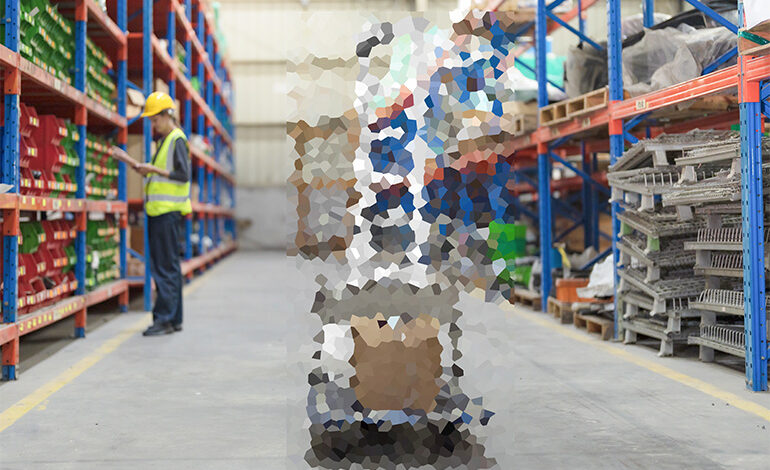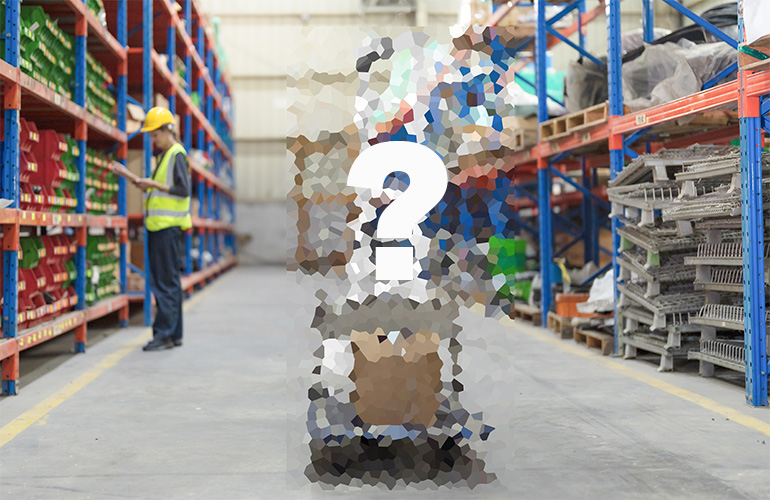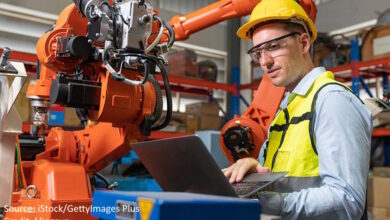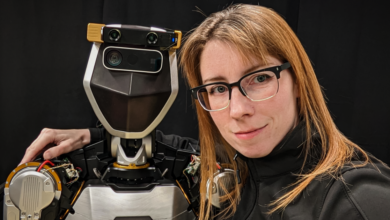Collaborative Robotics raises $100M in Series B funding

|
Listen to this article |
Collaborative Robotics has been developing a system for trustworthy operations. Source: Adobe Stock, Photoshopped by The Robot Report
Collaborative Robotics today closed a $100 million Series B round on the road to commercializing its autonomous mobile manipulator. The Santa Clara, Calif.-based company said it is developing robots that can safely and affordably work alongside people in varied manufacturing, supply chain, and healthcare workflows. In many cases, this is the same work that humanoid robots are jockeying for.
Brad Porter, a former distinguished engineer and vice president of robotics at Amazon, founded Collaborative Robotics in 2022. The Cobot team includes robotics and artificial intelligence experts from Amazon, Apple, Meta, Google, Microsoft, NASA, Waymo, and more.
“Getting our first robots in the field earlier this year, coupled with today’s investment, are major milestones as we bring cobots with human-level capability into the industries of today,” stated Porter. “We see a virtuous cycle, where more robots in the field lead to improved AI and a more cost-effective supply chain. This funding will help us accelerate getting more robots into the real world.”
The Robot Report caught up with Porter to learn more about the company and its product since our last conversation in July 2023, when Cobot raised its $30 million Series A.
Nothing to see here
Collaborative Robotics has been secretive about the design of its robot. You won’t find any photos of the cobot on the company’s site or anywhere else on the Web yet.
However, Porter told The Robot Report that it is already in trials with several pilot customers, including a global logistics company. He described the machine as a mobile manipulator, with roughly the stature of a human. However, it’s not a humanoid, nor does it have a six degree-of-freedom arm or a hand with fingers.
“When talking about general-purpose robots versus special-purpose robots, we know what humanoids look like, but with a new morphology, we want to protect it for a while,” he said. “We’ve been looking at humanoids for a long time, but in manufacturing, secondary material flow is designed around humans and carts. Hospitals, airports, and stadiums are usually designed around people flow. A huge amount of people is still moving boxes, totes, and carts around the world.”
The new cobot’s base is capable of omnidirectional motion with four wheels and a swerve-drive design, along with a central structure that can acquire, carry, and place totes and boxes around the warehouse. It is just under 6 ft. (2 m) tall and can carry up to 75 lb. (34 kg), said Porter.
The robot can also engage and move existing carts with payloads weighing up to 1,500 lb. (680 kg) around the warehouse. How the robot engages carts remains part of the mystery. But by automating long-distance moves and using existing cart infrastructure, Porter said he believes that the Collaborative Robotics system is differentiated from both mobile robot platforms and humanoid competitors.
“We looked at use cases for humanoids at Amazon, but you don’t actually want the complexity of a humanoid; you want something that’s stable and could move faster than people,” Porter added. “There are orders of magnitude more mobile robots than humanoids in day-to-day use, and at $300,000 to $600,000 per robot, the capital to build the first 10 humanoids is very high. We want to get robots into the field faster.”

Collaborative Robotics has kept its actual robot out of public view. | Source: Adobe Stock image Photoshopped by The Robot Report
Robots must be trustworthy
Porter said that he “believes that robots need to be trustworthy, in addition to being safe. This philosophy is driving the design and user-interface decisions that the company has made so far. Users need to understand what the robot should do by looking at it, unlike some of the existing designs of mobile robots currently on the market.”
In addition to a human-centered design approach, Collaborative Robotics is using off-the-shelf parts to reduce the robot bill of materials cost and simplify the supply chain as it begins the process of commercialization. It is also taking a “building-block” approach to hardware and plans to adjust software and machine learning for navigation and learning new tasks.
“The robot we’ve designed is 70% off-the-shelf parts, and we can design around existing motors, while every humanoid company is hand-winding its own motors to find advanced actuation capabilities,” Porter noted. “We designed the system digitally, so we don’t have to hand-tweak a bunch of things. By using 3D lidar, we know the state of the art of the technology, and it’s easier to safety-qualify.”
With large language models (LLMs), Porter said he sees the day when someone in a hospital or another facility can just tell a robot to go away. “It’s about user interaction rather than just safety, which is table stakes,” he said. “We think a lot about trustworthiness.”
 Learn from Agility Robotics, Amazon, Disney, Teradyne and many more.
Learn from Agility Robotics, Amazon, Disney, Teradyne and many more.
Collaborative Robotics preps for commercialization
General Catalyst led Collaborative Robotics’ Series B round, with participation from Bison Ventures, Lux Capital, and Industry Ventures. Existing investors Sequoia Capital, Khosla Ventures, Mayo Clinic, Neo, 1984 Ventures, MVP Ventures, and Calibrate Ventures also participated.
Since its founding in 2022, Cobot said it has raised more than $140 million. The company plans to grow its headcount from 35, adding production, sales, and support staffers.
In addition, Collaborative Robotics announced that Teresa Carlson will be joining it as an advisor on go to market at scale and industry transformation. She held leadership roles at Amazon Web Services, Microsoft, Splunk, and Flexport.
“I’m super-excited to be working with Teresa,” said Porter. “We’ve kept up since Amazon, and she thinks a lot about digital transformation at a very large scale — federal government and industry. She brings a wealth of knowledge about economics that will elevate the scope of what we’re doing.”
Paul Kwan, managing director at General Catalyst, is joining Alfred Lin from Sequoia on Collaborative Robotics’ board of directors.
“In our view, Brad and Cobot are spearheading the future of human-robot interaction,” said Kwan. “We believe the Cobot team is world-class at building the necessary hardware, software, and institutional trust to achieve their vision.”
Editor’s note: Eugene Demaitre contributed to this article.



